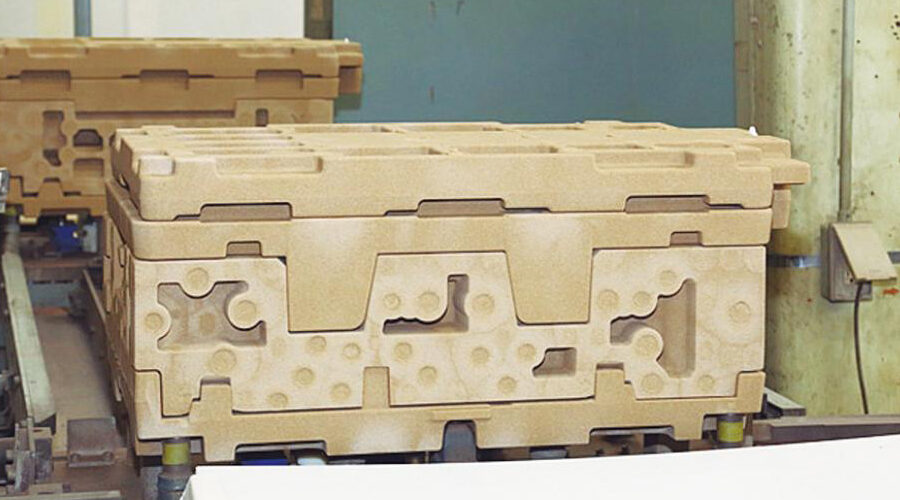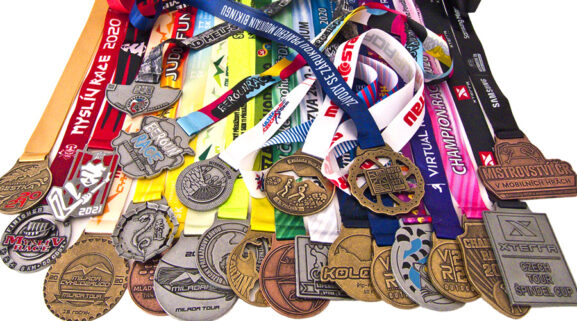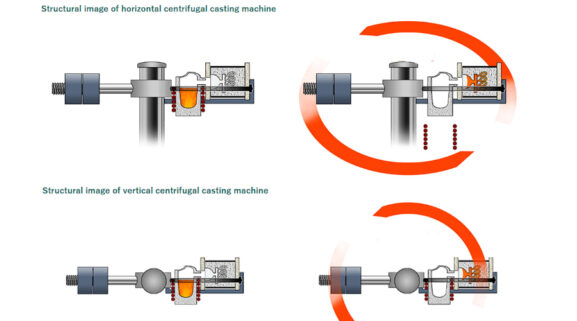Sand Casting
Sand casting is a casting method that uses a sand mold formed with foundry sand.
Since wooden molds are generally used to manufacture sand molds, they are cheaper and have shorter delivery times than lost wax and die casting, and have the advantage of being able to handle small lots and large items.
The disadvantage is that compared to lost wax and die casting, the size casting surface is rougher and the dimensional accuracy is inferior. In addition, it is not suitable for mass production.
Sand Casting Methods
Raw Casting Method
It is called a raw mold because the foundry sand is not fired (dried), but pressed raw and molded to form a sand mold.
A top-to-bottom paired formwork made of wood or metal is created, and the frame is pressed with a prototype (model) of the same shape as the product and casting sand, and the prototype is removed to make a mold.
merit
・Castings can be easily removed.
・Mass production is possible at low cost.
・Sand can be used repeatedly, and the regeneration process is easy.
・The cost of materials is low and no toxic gas is generated.
demerit
・The casting surface (the surface of the casting) is rough.
・Dimensional accuracy is inferior to others
・The mold is brittle, so it is not suitable for large products.
Gas Curable Mold
It is a method of injecting gas into cast sand and curing it by a chemical reaction to make a mold.
There is a carbon dioxide gas method in which carbon dioxide gas is injected into silica sand mixed with water glass for curing, and a cold box method in which phenolic resin, isocyanate resin, and amine gas are used as additives.
merit
The strength of the mold is high.
– High dimensional accuracy.
demerit
・ Strength decreases over time.
・It is difficult to reuse sand.
Self Rigid Mold
It is a method of curing sand and making a mold by leaving it at room temperature.
There are furan self-hard molds that harden sand by dehydrating and condensing organic furan resins and curing agents, and organic ester self-hard molds that are cured using water glass and organic esters.
merit
・ The casting surface is finished
beautifully ・ Dimensional accuracy is high
・ Foundry sand can be reused
demerit
・ Strength decreases over time
・ It is easily affected by temperature and humidity, and it is difficult to manage the mold
・ Depending on the shape, defects such as cracks are likely to appear.
Full Mold Casting
This is a casting method in which a model such as Styrofoam is embedded in casting sand, and the model is dissolved with molten metal to replace it.
A model of the same shape as the shape of the product is made of Styrofoam, and the model is embedded in foundry sand to make a mold. Then, by pouring molten metal into the model while it is embedded, the Styrofoam model decomposes at high temperatures, gasifies, flows out of the mold, and is replaced by the poured metal.
merit
・ Since no mold is required, delivery time and initial cost can be suppressed.
・ High degree of freedom in shape
・ Strong for single items and small lots
・ Can be used for large sizes
demerit
・Not suitable for mass production
・High technology is required because casting defects are likely to occur due to the gas when Styrofoam melts.



